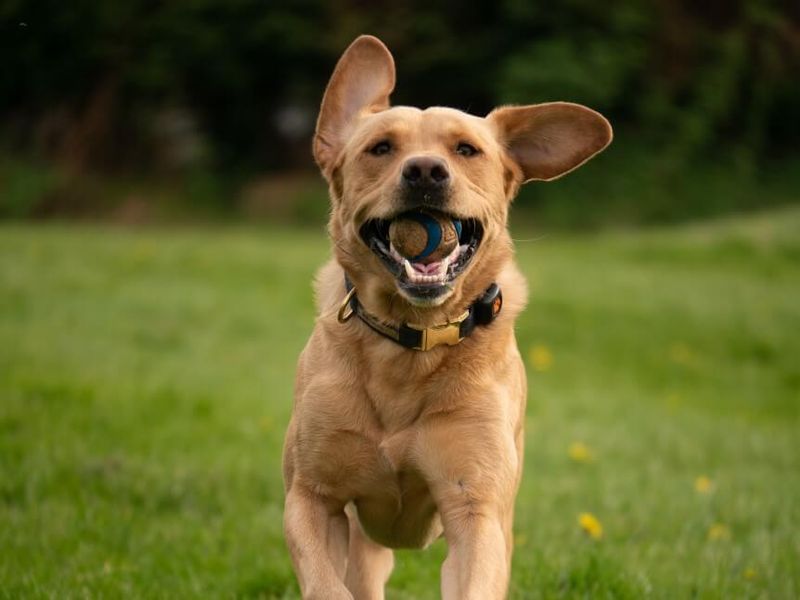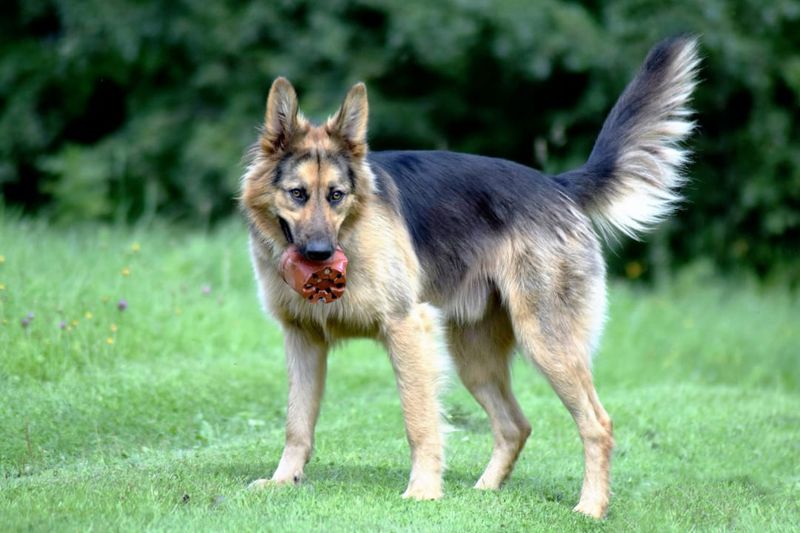Understanding your dog’s emotions can be challenging, but recognizing specific signs of happiness or depression can help you respond appropriately. This article explores 11 signs that may indicate your dog is feeling down and 5 signs that reveal they’re perfectly content, providing you with insights into their emotional well-being.
Loss of Interest in Play
Dogs are usually enthusiastic about playtime, but when they lose interest, it might suggest something’s amiss. Imagine your lively pup suddenly ignoring its favorite squeaky toy or refusing a game of fetch. This change in behavior could signify underlying depression.
A lack of enthusiasm for activities once enjoyed is a common sign. Consider whether anything in your dog’s environment has shifted recently. Changes, even subtle ones, can impact their mood. Observing these behavioral shifts early can lead to timely interventions.
Regular play is vital for mental stimulation and happiness. Keep an eye on these changes to ensure your furry friend remains joyful.
Changes in Appetite
When a dog’s appetite changes, it often hints at underlying emotional states. Picture a normally ravenous eater who now picks at meals or treats them with indifference. Such shifts can be alarming.
Reduced appetite can stem from feelings of sadness or anxiety. A decrease in eating may coincide with other signs like lethargy or withdrawal. It’s crucial to monitor these changes.
Conversely, some dogs might overeat when feeling low, seeking comfort in food. Understanding your pet’s eating habits helps in identifying emotional well-being or distress.
Excessive Sleeping
Sleep patterns can reveal much about a dog’s mental state. When Fido seems to spend more time napping than playing, it might be a sign of depression.
While rest is essential, excessive sleeping suggests withdrawal from activities once loved. This might be the dog’s way of coping with feelings of sadness or uncertainty.
Consider the context: has there been a change in routine or environment? Keeping track of these changes can aid in understanding what’s causing this shift in behavior.
Avoidance of Social Interaction
Social animals by nature, dogs thrive on interaction. If your dog begins avoiding family members or other pets, it might be signaling distress.
This avoidance can manifest through hiding, turning away, or even retreating to a quiet corner. It’s not just shyness; it’s often a cry for help.
Understanding the root of this behavior is key. Is it a new environment, a loss, or something else? By paying attention to these cues, you can better support your canine companion’s emotional health.
Destructive Behavior
Destructive actions, like chewing shoes or tearing up furniture, can be more than just mischief. Such behavior often stems from frustration or emotional turmoil.
Consider a scenario where your usually calm pet suddenly becomes a whirlwind of destruction. This shift can be a cry for attention or relief from boredom and anxiety.
Understanding these signs can help in addressing the root causes. Providing mental stimulation through toys or activities can redirect energy positively, aiding in emotional balance.
Withdrawal from Affection
Affectionate by nature, dogs who shy away from cuddles might be experiencing emotional lows. Imagine your pet, once a lap lover, now retreating from touch.
This withdrawal can perplex owners, but it’s often an indicator of stress or sadness. Paying attention to these subtle cues helps in identifying further emotional needs.
Understanding such behavior allows for proactive measures, ensuring your dog feels secure and loved. Identifying and addressing emotional changes early can foster a nurturing environment.
Changes in Licking Behavior
Licking is a natural behavior, but excessive licking might suggest emotional distress. Picture a dog continuously grooming one spot, beyond normal cleanliness.
This repetitive action can indicate anxiety or unease. It’s more than just a habit; it’s a way of coping with underlying feelings.
Recognizing these patterns allows you to intervene effectively. By understanding the emotional triggers, you can offer comfort and reduce stressors in your pet’s life.
Loss of Training Skills
Once sharp as a tack, a dog forgetting basic commands might be facing emotional challenges. Consider how a well-trained pet suddenly seems bewildered by simple cues.
This lapse can be frustrating but often signals deeper issues. Stress, anxiety, or depression can affect cognitive function.
By recognizing these changes, you can address the root cause, whether it’s environmental stressors or emotional upheaval. Offering positive reinforcement and a supportive environment can aid recovery.
Increased Vocalization
Heightened barking or whining can sometimes be more than mere noise. Imagine a quiet pet now vocalizing excessively.
Such behavior might indicate discomfort or distress, expressing emotions they can’t otherwise convey. This change might puzzle owners but is often a sign of deeper emotional struggles.
Recognizing these signs early allows for timely interventions. Understanding potential triggers and providing appropriate outlets for energy can ease tension and promote happiness.
Panting or Shaking
While panting and shaking can stem from excitement or physical exertion, they can also signal emotional distress.
Imagine a dog behaving frantically during seemingly normal situations. This might indicate anxiety or fear, common components of depression.
By observing these physical cues, you can help create a calming environment, addressing the underlying emotional needs. Comfort and reassurance can ease these symptoms, promoting a sense of security.
Lack of Grooming
Neglecting personal grooming is not just a human trait but can affect dogs too. Envision a usually tidy pup now appearing unkempt.
This change might suggest that your dog is not feeling its best. Depression can lead to disinterest in self-care, mirroring similar patterns in humans. Recognizing this shift early allows for interventions.
Regular grooming not only maintains physical health but supports emotional well-being. Encouraging grooming through positive reinforcement can help uplift your dog’s spirits.
Wagging Tail with Enthusiasm
A wagging tail often symbolizes joy and contentment. Picture a dog greeting you with enthusiastic tail wags, a clear sign of happiness.
This behavior signals a strong, positive emotional connection. Such gestures reflect contentment and trust, essential components of a happy canine life.
Understanding these signs helps in fostering a joyful, fulfilling relationship with your pet, ensuring they continue to thrive emotionally and physically.
Bright, Engaged Eyes
Eyes are windows to the soul, even for dogs. A bright, engaged gaze indicates curiosity and happiness.
Envision a dog with sparkling eyes, eagerly observing surroundings. This engagement reveals a satisfied and emotionally healthy pet.
Observing such behavior helps in nurturing a happy and stimulating environment, promoting continued well-being and joy.
Playful Behavior
Playfulness is a hallmark of canine happiness. Picture a dog energetically chasing a ball, embodying joy.
Such displays of fun and energy indicate a content and emotionally fulfilled pet. This behavior fosters physical health and strengthens bonds.
By encouraging playful interactions, you ensure a joyful and harmonious relationship, promoting a life full of vitality and happiness.
Leaning In for Affection
When a dog leans in for affection, it’s a profound expression of trust and happiness. Imagine your pet curling into you, seeking closeness.
This behavior signifies a deep emotional connection, reflecting a safe and loving environment. It’s a testament to the bond shared.
Fostering such moments strengthens relationships, ensuring a happy, content life together, reinforcing trust and affection.
Healthy Appetite
A healthy appetite often mirrors a dog’s emotional well-being. Visualize a dog eagerly consuming its meal, savoring every bite.
Such enthusiasm for food reflects a content and well-adjusted pet. It’s a sign of a balanced and joyful lifestyle.
Understanding these cues aids in maintaining a nourishing environment, ensuring ongoing happiness and health.
















